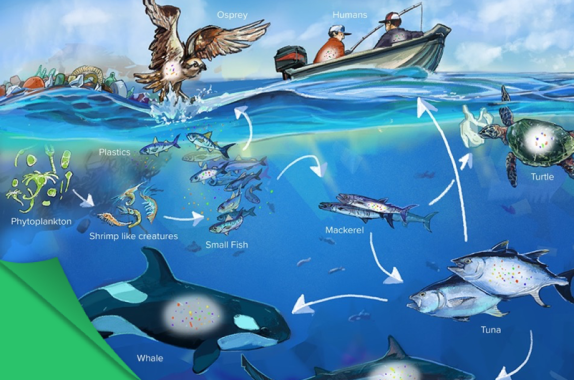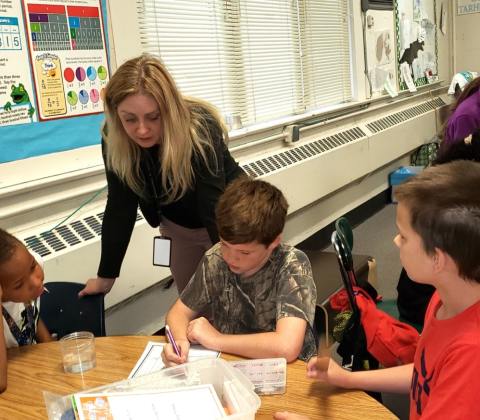Grade Level
6 - 8
minutes
Multi-day
subject
Engineering and Tech
Activity Type:
engineering and design challenge, human impact
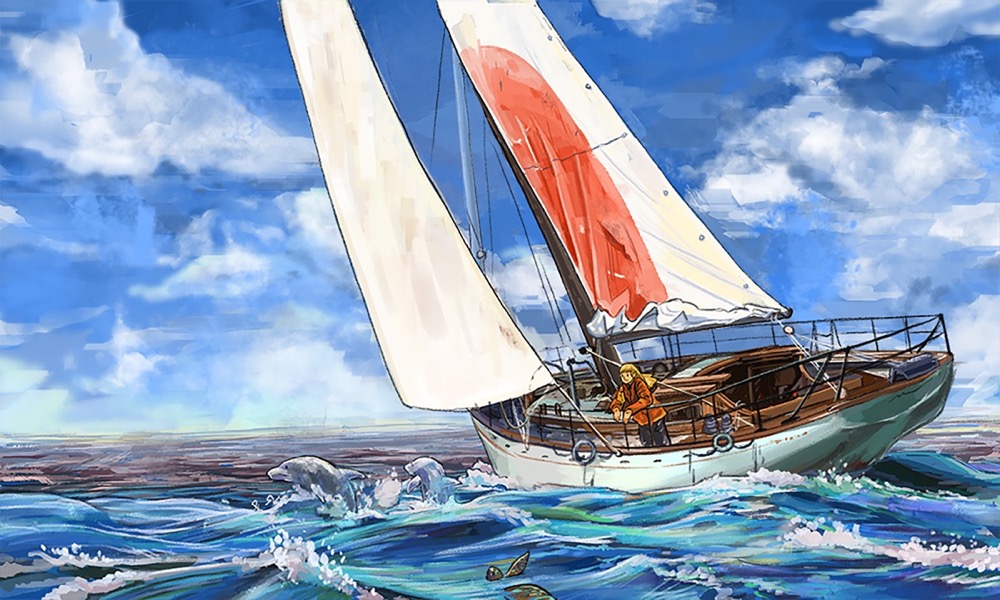
 Picture this. You’ve set sail from San Francisco Bay with your family, headed for the islands of Hawaii. The horizon expands as you lower the sails and cut the engine. You see a sea turtle swimming, a pod of dolphins swims by, and the water is bluer than any other color blue you have ever seen. As your boat continues on its course for the next few hours, you notice that the ocean water begins to look like a cloudy soup. You lean over the side of the boat to get a better view and notice tiny pieces of plastic surrounding your ship. You have just entered the Pacific trash vortex known as the Great Pacific Garbage Patch!
Picture this. You’ve set sail from San Francisco Bay with your family, headed for the islands of Hawaii. The horizon expands as you lower the sails and cut the engine. You see a sea turtle swimming, a pod of dolphins swims by, and the water is bluer than any other color blue you have ever seen. As your boat continues on its course for the next few hours, you notice that the ocean water begins to look like a cloudy soup. You lean over the side of the boat to get a better view and notice tiny pieces of plastic surrounding your ship. You have just entered the Pacific trash vortex known as the Great Pacific Garbage Patch!
Today we will be taking a journey using our imagination. Have you ever heard of the Great Pacific Garbage Patch? Learn more about it by watching this video.
— At the 1:23 video mark: How do you think this garbage patch appears or looks in the ocean?
— At the end of the video: Do you think there is an economical way to clean up this Pacific Garbage Patch?
In this classroom activity, you will work on finding a solution for the Great Pacific Garbage Patch! You will consider the impact of this waste on the environment and marine life, and how this waste can be captured and removed, hopefully using the natural environment of the ocean to propel the solution through the water. Let’s learn more about the GPGP, and what’s already been tried!
Are you an educator? Check out the Teaching Guide for more details about setting up this design challenge.
The Great Pacific Garbage Patch
What is the Great Pacific Garbage Patch? It’s a collection of plastics floating in the ocean, some of which are so small they can’t be seen with the naked eye, called microplastics. The Great Pacific Garbage Patch is taking up an area of the ocean that is roughly two times the size of Texas! The plastics, which are not biodegradable, break down over time into tiny pieces. The plastic pieces, which are not visible from space, or even from a sailboat at times because they are beneath the ocean surface, are exposed to ultraviolet radiation, wave action, coral reefs, rocks, and sand. All of these elements together contribute to the breaking down of plastics into smaller and smaller pieces. Even though the pieces become smaller and smaller, they are still pieces of plastic, and they never completely decompose. To gain a better understanding of how these plastics break down in the ocean over time, watch this video segment below that aired on 60-Minutes.
Albatrosses consume plastics and then, thinking it is food, feed the plastic to their chicks, which in turn die from starvation or internal injuries.
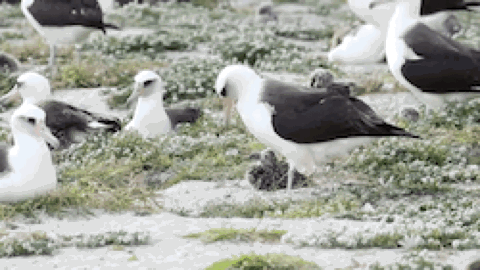
It’s not only the buildup of plastics in the food web that concerns scientists, but the harm the debris can cause if seals or other wildlife become tangled in netting, strings, fishing line, or other long thin plastics within the garbage patch. The collection of microplastics on the surface of the ocean can also block sunlight from penetrating the water. This blockage threatens the growth of algae and plankton. If the autotroph communities in the ocean are harmed, the entire marine food web could change!
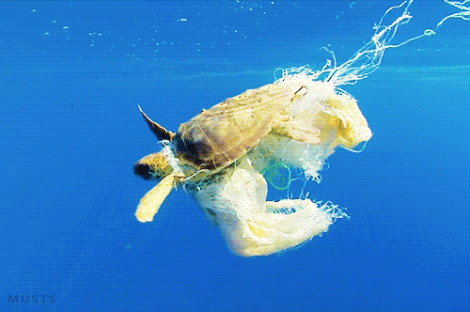
The Marine Food Chain
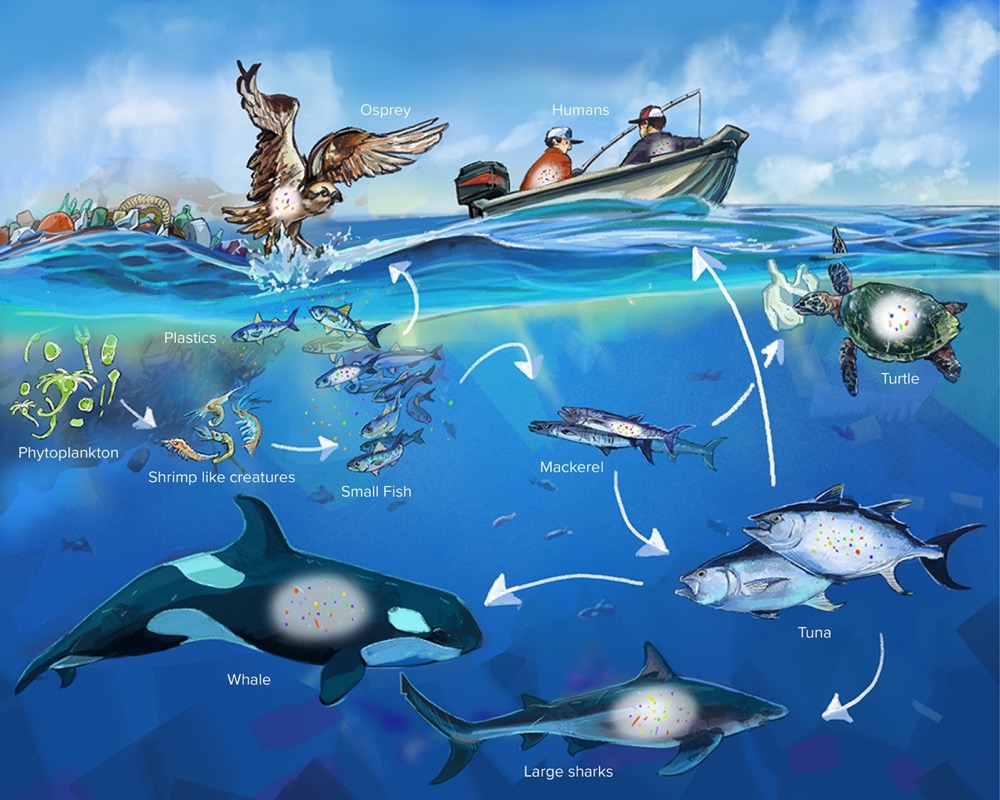
Imagine you traveled out in the Pacific Ocean for a fishing trip. While fishing, you notice an osprey feeding on some small fish. What you don’t see is below the surface. Before the small fish became prey to the osprey, they consumed small plastics as they swam through the ocean eating plankton. Then some of the school of small fish were consumed by mackerel which were, in turn, consumed by the larger tuna. The plastics present in the digestive tract of the small fish now enter the digestive tracts of every living animal that consumed them directly or indirectly (the osprey and mackerel), but it does not stop there. The osprey then feed some of their catch to their offspring, and now the babies have plastics in them, too.
The plastics that are digested by the birds and fish release toxic PCBs (polychlorinated biphenyls, a chemical component of many plastics) into the body systems of the animals. These toxins can lead to genetic mutations in their future offspring or tumors within the birds or fish themselves.
As for the mackerel which were consumed by the tuna, plastics and PCBs were again passed through the food chain. What happens to those toxins present in the tuna? You guessed it! They will be further spread throughout the food web as animals consume the fish. Whales, sharks, and even you could digest the microplastics, and their PCB’s, yourself!
To learn more about how plastics enter our food chains and collect in living organisms (a process called biomagnification) you have to start with plankton. Professor Tamara Galloway of the University of Exeter describes her studies of zooplankton in this video.
The Great Garbage Patch Cleanup Design Challenge
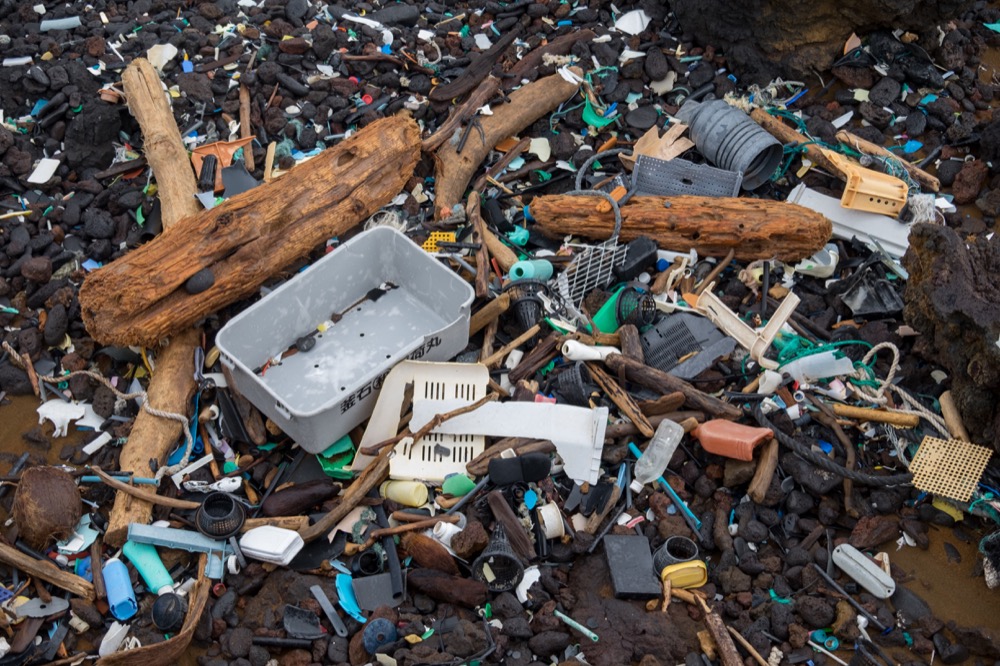
Today, we will become engineers employed by the Ocean Cleanup Company to work on improving System 001, an invention that was designed to float in the GPGP and remove ocean plastics. Your job is to design, purchase supplies for, build, test, and revise a GPGP cleanup device. Once you’ve tested it, you’ll need to create a sales pitch to convince others, first that there is a desperate need to clean up the GPGP, and then that your device is the one to use!
Educators, check out the Teaching Guide for more details about setting up this design challenge.
When designing and testing your device, how will you ensure that it is effective in cleaning up the test area? What are some things you expect it to do? How can you keep in mind the concerns of environmentalists and critics and overcome those challenges with your design? To learn more about the concerns and to watch a video of how the System 001 is designed to work, click here.
Applying the Engineer Design Process
Throughout this activity, you will be asked to think like an engineer, and to follow the Engineering Design Process. You should consider how you will design a device that can capture waste while using the forces naturally present in a marine environment to propel your system through the water.
Activity 1: Research The Problem How are microplastics affecting food chains in the Pacific Ocean?
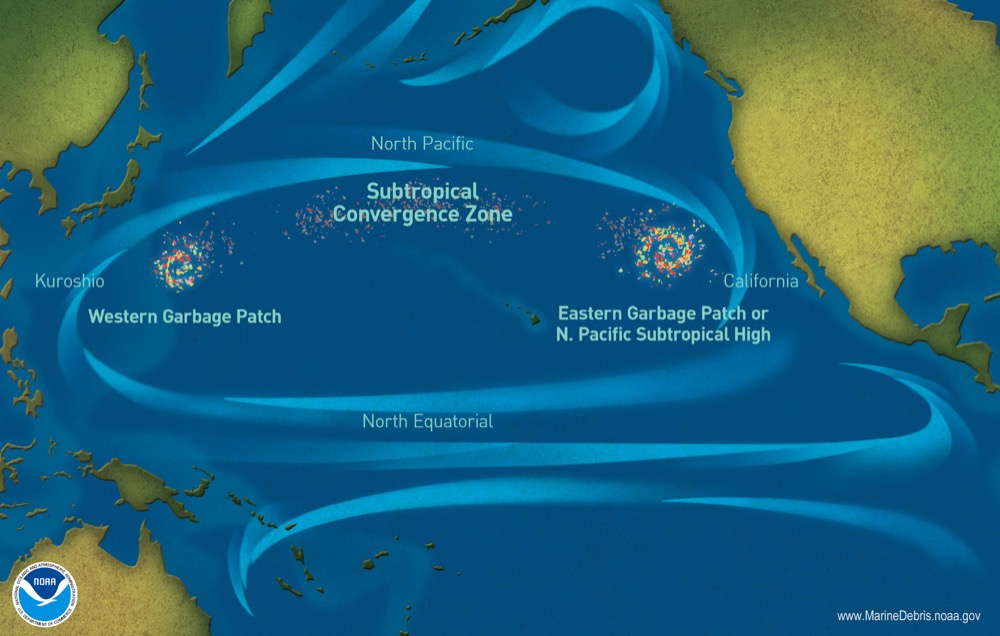
During the 1990’s, the science community was made aware of large areas called gyres, made up of tiny bits of plastic gathering together to create the Great Pacific Garbage Patch. The garbage has collected in these areas from sea voyaging vessels and offshore waste. A study published in the journal “Environmental Research” in 2008 stated that 44 percent of all seabirds have eaten plastic and 270 other types of marine animals have been negatively impacted. This plastic impairs the digestive tract and passes on toxins such as PBC and DDT absorbed from seawater to the animal that consumes it. This includes humans as we consume marine animals. The toxins stay and accumulate within the body cells of the consumer (biomagnification) and can eventually, through relationships in food chains, cause birth defects and cancer in the consumers. Take another look at the diagram above of the marine food web in the Great Pacific Garbage Patch.
Using the space provided on the Activity 1 Student Handout, determine how biomagnification can have a lasting impact on the human and larger predator population by answering the following four questions:
- A small fish consumes zooplankton which has consumed microplastics. How will the small fish be impacted?
- What will happen to the whale and turtle population if the fish population begins to die out from the plastics ingested?
- Biomagnification is more significant in the whale and human population than in the fish or plankton population. How will this potentially have a more significant impact on these populations in the future?
- Describe an example where a person who lives in California could be impacted by biomagnification and the microplastics in the Great Pacific Garbage Patch.
Has anything been done to address the problem with the Great Pacific Garbage Patch? Yes!
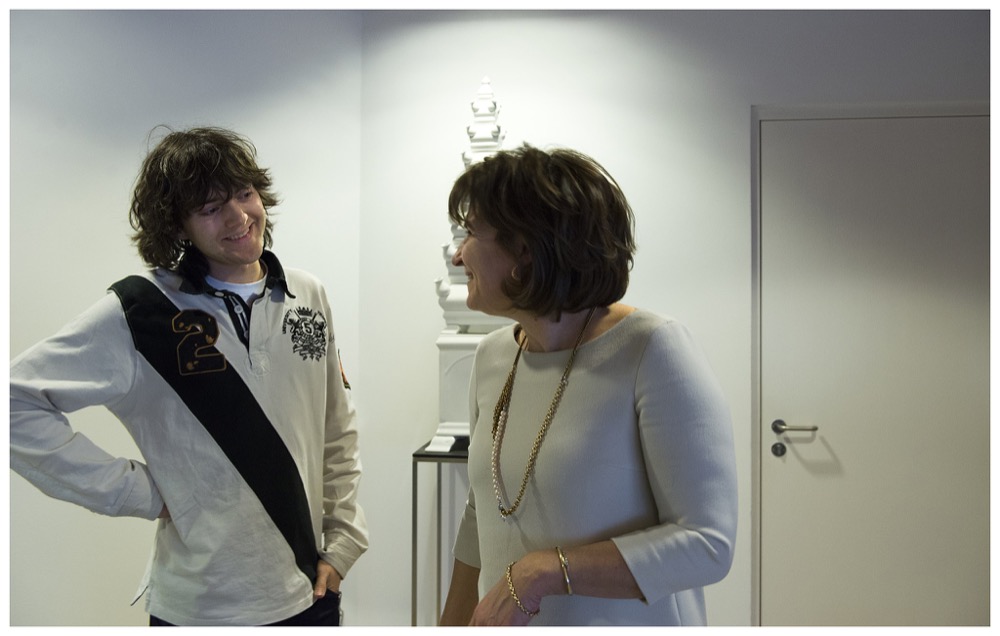
A young engineer named Boyan Slat may have come up with a solution to solve this problem. When Slat was 17 years old, he invented a U-shaped barrier system designed to use wind and wave propulsion to travel along the debris path, collecting plastic particles as it moved. The device, known as System 001, has worked mostly as intended. A few problems have occurred. A 60-foot piece of the U shaped barrier has broken off the device. The system also required improvements to modify how fast the system traveled through the ocean, ensuring that it would “catch up” to the speed of the trash it was trying to collect.
Critics are already skeptical of whether System 001 is a solution to the problem or adds another layer onto it. Kim Martini, senior oceanographer at Seabird Scientific, and Miriam Goldstein, a marine biologist and director of ocean policy at the Center for American Progress, have argued that the design plan is flawed. The two feel the Ocean Cleanup company underestimated the effects of the ocean waves on the device. They also have stated that the system could harm marine life in the process of collecting plastics. Others have expressed the inadequacy in testing the device in real ocean conditions.
Can you improve on Boyan’s design, or create a working design of your own? Can you imagine other approaches to building a device that will capture plastic waste from the ocean?
Activity 2: Develop Solutions Planning Your Design And Supply List
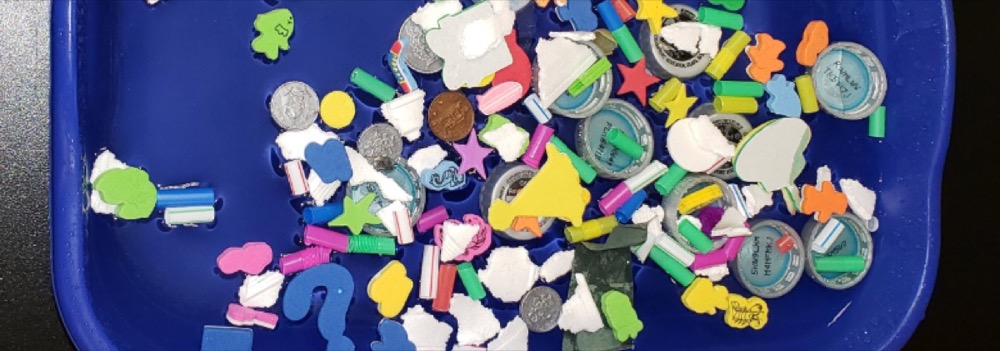
Materials
— $12.00 in Ocean Cleanup Currency
— Building Materials (varied, see example below for ideas)
Design Challenge
You will be divided into teams to design and create an ocean cleanup device. Use the knowledge you have gained to improve upon the design of System 001. Each team will consist of 2-4 members and may only use the provided materials in your design plan.
Your group will have the following design constraints when completing the challenge:
- The new system must collect debris in a pocket or U-shaped corral.
- The system must allow water to flow through it while retaining debris.
- The system must be designed to at least partially float on top of the water but may also have components that submerge below the surface.
- All components must be attached and secured to the floating device.
- Your budget for the design is $12. Keep your total cost at or below $12.
Remember, one of the goals of the challenge is to design and create a cleanup system for the lowest amount possible, so use your money and resources wisely.
These are examples of supplies that may be available and their cost:
— Foam rollers, $1 per roller
— Nylon hose, 50 cents per stocking
— Yarn, 50 cents per 10 inches
— Chenille sticks, 50 cents each
— Cheesecloth, $1 per 5” x 5” square
— Netted material, $1 per 2” x 4” piece
— Foam squares, 50 cents per square
— Bubble wrap, $1 per sheet
Once in your group, you will be provided with planning time. During this time, you should use the Activity 2 Student Handout to discuss design ideas, draw your design, list the materials you will need to build the design, make a budget, and explain how the materials will be used within your design.
Activity 3: Prototype Your Design With your team, construct your ocean cleanup device.
Sometimes improvements are needed to make a design work correctly. Engineers continually test and retest their designs to decide whether improvements are needed. If you have time, you may return to this part of the activity to revise and retest. Track your modifications on your Activity 2 Student Handout.
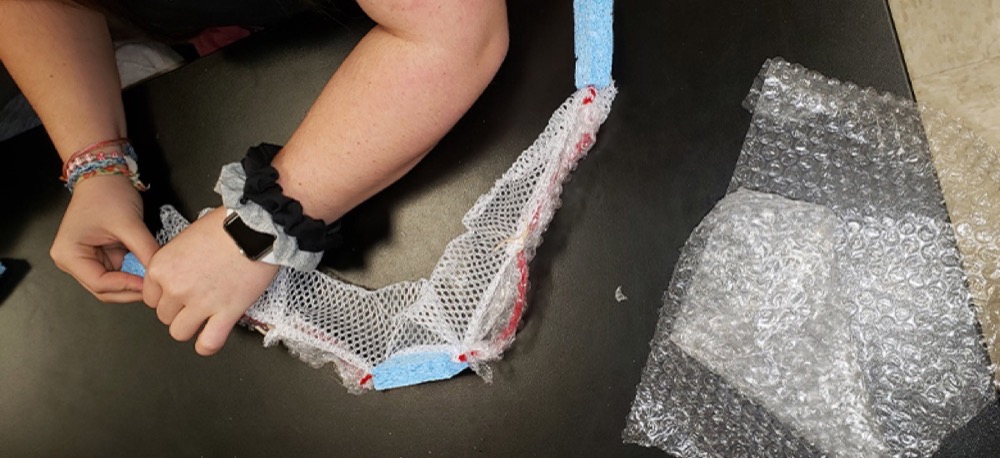
Activity 4: Test Your Design And Improve It
When your device is complete, take it to the testing station to try it out. Be sure to take notes about your changes as you make them, on paper, or even capture the testing on video! The testing area will include a baby pool or something similar, full of water, with a fan at least 15 inches from the pool. Once your design is complete, it’s time for testing!
Materials
— Activity 4 Student Handout
— Team cleanup device
- To test the ocean cleanup device design, place the design in the water with a fan positioned behind the device, so that the fan will blow the device toward the plastic debris.
- Turn the fan on, beginning at speed 1 for 30 seconds and then adjusting to speed 3 for an additional 30 seconds. Tilting the fan will simulate wind and ocean waves.
- One member of the team should take notes every 30 seconds to indicate whether the system stayed afloat or sank and how many debris pieces the system collected.
- Use the Activity 4 Student Handout to record all debris collected by the device at each interval of the test.
- Discuss with your team how you would improve upon your design plans. Indicate what you would change about your designs and why. If time allows, make the changes and retest!
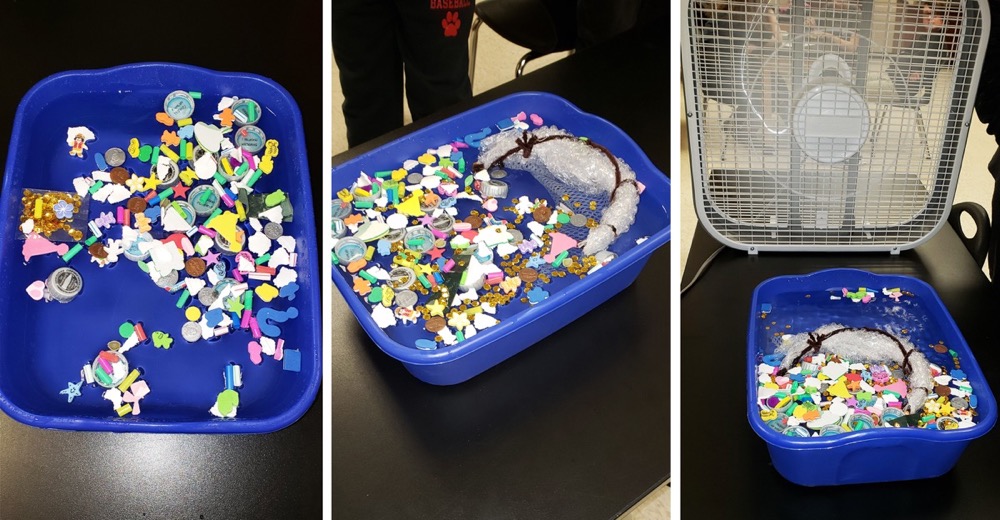
Once all of the teams have tested their devices, discuss the total number of pieces of plastic collected by each system. Record each group’s total on the board/chart paper/ document.
Teams should compare what worked best and what worked least in their designs by sharing the observations they made during testing. Groups should share their designs, and point out what worked and did not work in the system. Have them present their data to the class by standing in front of the class, explaining what debris was collected, how much was collected, and how long it took to collect debris, and what they thought was most successful.
Activity 5: Let’s Give A TED-style Talk!
TED is a nonprofit organization specializing in the spread of ideas through short, powerful talks. As a team of engineers, you are going to plan, write, and deliver a Ted talk to your group of peers. This speech should be no longer than 10 minutes.
Armed with information from the cleanup device testing and shareout, work with your team to create a TED-style talk to support their findings. You will collaborate as a team of engineers to plan, write, and deliver a TED-style talk to a group of peers. The speech should last no longer than 10 minutes. All group members must be part of the planning and delivering of the speech. Each team will need to include the following in their talk:
- A way to educate the audience/virtual community on the Great Pacific Garbage Patch. This image of the Great Pacific Garbage Patch should be incorporated into the explanation.

Great Pacific Garbage Patch Vortex. Credit: NOAA - An explanation of your design and original purpose of System 001. A statement of how this design has improved upon this technology.
- An explanation of why the public should care, how they can help, and how they can become involved.
TEACHER TIP: To ensure all group members have an equal part in the TED-style talk you may choose to assign roles or job descriptions. One suggestion is to have each member of the group to be responsible for addressing one question under the task requirements.
Following the completion of your TED-style talk, you may wish to watch Boyan Slat’s first TED Talk here.
Next Generation Science Standards
MS-ESS3-3 Earth and Human Activity
Apply science principles to design a method for monitoring/ minimizing human impact on the environment.
Define the criteria and constraints of a design problem with sufficient precision to ensure a successful solution, taking into account relevant scientific principles and potential impacts on people and the natural environment that may limit possible solutions.
Evaluate competing design solutions using a systematic process to determine how well they meet the criteria and constraints of the problem.
Analyze data from tests to determine similarities and differences among several design solutions to identify the best characteristics of each that can be combined into a new solution to better meet the criteria for success.
Develop a model to generate data for iterative testing and modification of a proposed object, tool, or process such that an optimal design can be achieved.
Cross-Cutting Concept Statement
ETS2.B Influence of Science, Engineering, and Technology on Society and the Natural World (for MS-ETS1-1)
All human activity draws on natural resources and has both short and long-term consequences, positive as well as negative, for the health of people and the natural environment.
The uses of technologies and limitations on their use are driven by individual or societal needs, desires, and values; by the findings of scientific research; and by differences in such factors as climate, natural resources, and economic conditions.
Written by Amy Philyaw
Edited by Shirley Campbell, Brian Soash, and Ariel Zych
Digital Production by Xochitl Garcia, Johanna Mayer, and Ariel Zych
Illustrations by Jay Rasgorshek
Educator's Toolbox
Meet the Writer
About Amy Philyaw
Amy Philyaw is the director of Patterson Science Center, a department of Caldwell County Schools, in Lenoir, North Carolina. She is a Kenan Fellow who spent 14 years as a high school science teacher. She has served as the director of Patterson Science Center since 2012. During her tenure at PSC, she has received over $1 million in grant funds and developed over 40 curriculum models interwoven with STEM.
